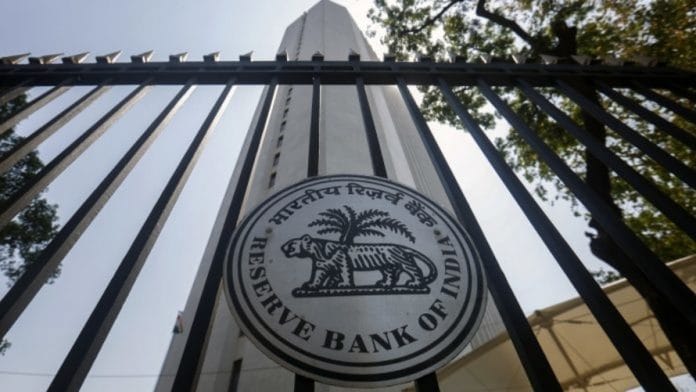Mumbai: With the headline consumer price index (CPI) inflation remaining persistently above its comfort level since 7 months, the Reserve Bank of India is likely to maintain status quo on key policy rates during the Monetary Policy Committee’s (MPC) bimonthly policy review that started today.
The resolution of the MPC meeting will be announced on 4 December.
Though the GDP growth for the current financial year is still seen at negative, the recent uptick in the economic activity reflected in lower than expected contraction of 7.5 per cent for the July-September quarter could prompt the central bank to revise its full year projection upwards, economists said.
“We expect the RBI to also revise up its GDP forecast for Oct-Dec’20 and Jan-March’21 (currently at -5.6% YoY and +0.5% YoY respectively) and its FY21 forecast, but leave its April-June’21 forecast unchanged at +20% YoY (year-on-year) in the upcoming monetary policy on 4 December,” said Kaushik Das, Chief Economist, India and South Asia at Deutsche Bank. The RBI had projected 9.5 per cent contraction in India’s GDP for the current fiscal.
Das also sees RBI increasing its CPI inflation forecast by at least 100bps for October-December from its current forecast of 5.4 per cent, and by 50bps for January-March from the current projection of 4.5 per cent. “With the central bank likely to revise up both its inflation and growth forecast, we do not see any room for further rate cuts in this cycle,” he said.
The mandate of the central bank is to maintain CPI inflation at 4 per cent, with a variation of +/- 2 per cent.
Analysts at Nomura also expect the MPC to revise the growth and inflation projection while holding on to interest rates as the central bank would like to ‘wait and see’ how growth-inflation dynamics evolves.
“The growth outturn so far is evolving much stronger than the RBI projections,” Nomura said in a note to its clients.
“We expect the RBI to revise up its FY21 GDP growth projection to -8.5% YoY from -9.5% earlier… we expect the RBI to revise up its inflation projection by more than 1 percentage points (pp) to 5.5-6.9% in H2 FY21 (from 4.5-5.4%) and a new H1 FY22 forecast of 4.2-4.8%,” Nomura said, adding that in view of these upward revisions, MPC is likely to vote unanimously to remain in wait-and-see mode.
“We are also removing rate cuts (50bps cumulative in H1 2021) from our forecast, and we now expect the RBI to be on hold through 2021. Our forecast was based on the premise that infections could surge again after the festivals (slowing the pace of recovery), limited fiscal headroom to support growth and lower inflation,” it said.
Also read: High inflation doesn’t give RBI room for more interest rate cuts, MPC member indicates
The liquidity conundrum
The liquidity surplus in the banking system to the tune of Rs 8 lakh crore has been a worry for the RBI as such excess cash makes anchoring inflation difficult. The surplus is mainly due to aggressive dollar purchases by the central bank in the wake of huge inflows on the back of record foreign direct investment, and strong foreign portfolio investment recently.
The RBI had to intervene in the foreign exchange market to absorb the excess dollar liquidity to arrest rupee appreciation (a rise in rupee hurts imports), but the move has resulted in excess rupee liquidity. Due to the heavy intervention in the foreign exchange market, India’s foreign exchanges reserves rose by $99 billion this financial year to reach $575 billion as on 20 November.
“The RBI faces a triple challenge of elevated inflation, high government borrowing and large capital inflows,” economists at HSBC said in a report.
“FX [foreign exchange] purchases have been a stronger driver of surplus domestic liquidity than bond purchases. If the RBI doesn’t intervene in the FX market, the rupee could appreciate, hurting export competitiveness. If it does intervene, it would add to the already elevated banking sector liquidity, stoking inflation worries further,” the report said, adding that the RBI should hold interest rates in the upcoming monetary policy review while maintaining accommodative stance to “juggle deftly” through this period, striking a balance between its objective on inflation, bond yields and the rupee.
The surplus liquidity has pushed down the short-term rates, with the overnight rates falling below the reverse repo rate which is at 3.35 per cent. To preserve the sanctity of the policy corridor (the gap between repo and reverse repo rate), some liquidity abruption measures such as a hike in the cash reserve ratio could be on the cards in 2021.
“While RBI may not want to hike the policy repo rate in a hurry, we think the central bank can potentially increase the reverse repo rate (currently at 3.35%) by 40bps in 2021. This is likely to be preceded by a CRR hike of 100bps by 2Q’21, to reduce some amount of surplus liquidity in the banking system,” Das said.
In March, when the RBI reduced the cash reserve ratio by 100 bps to 3 per cent, it said the ‘dispensation’ will be available for a period of one year ending on 26 March 2021.
The focus of the monetary policy shifted decisively to boost growth since the outbreak of the Covid-19 pandemic and the nationwide lockdown in March. It is to be seen if inflation management will regain the central bank’s attention even if the accommodative stance is maintained by the six-member MPC.
Also read: RBI says Indian economy could register positive GDP growth in Q3, but warns of grave risks






